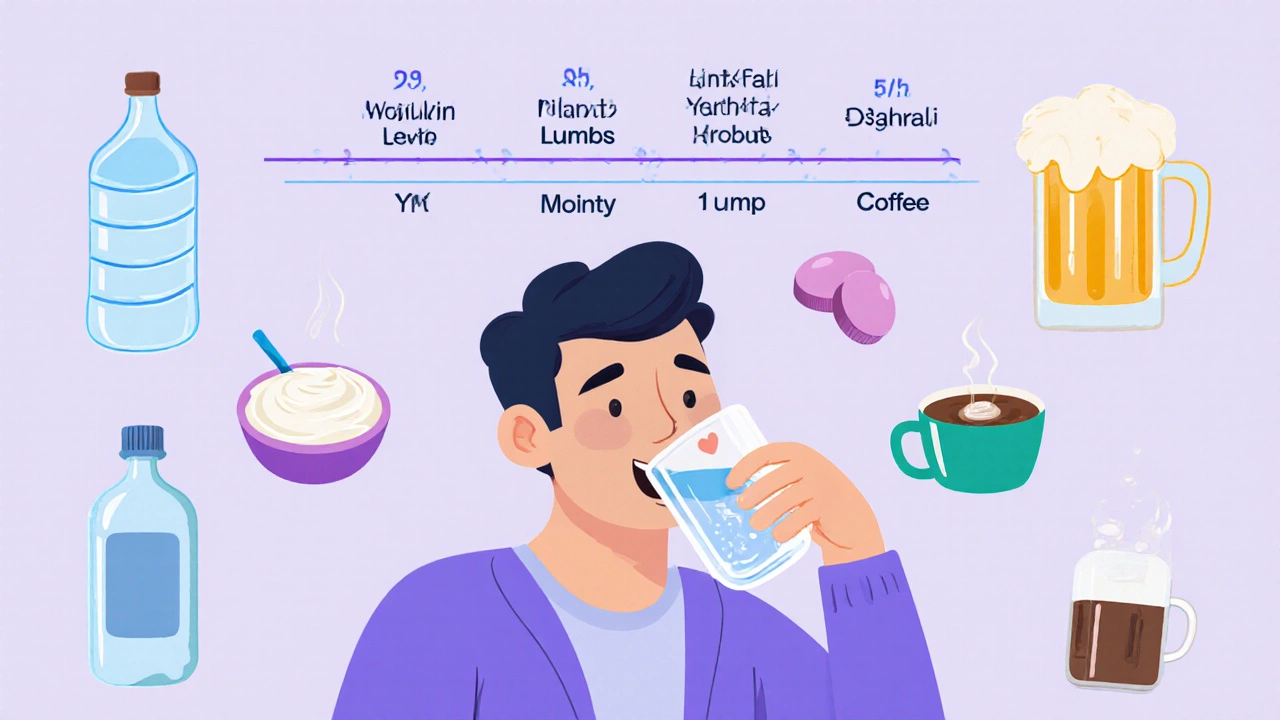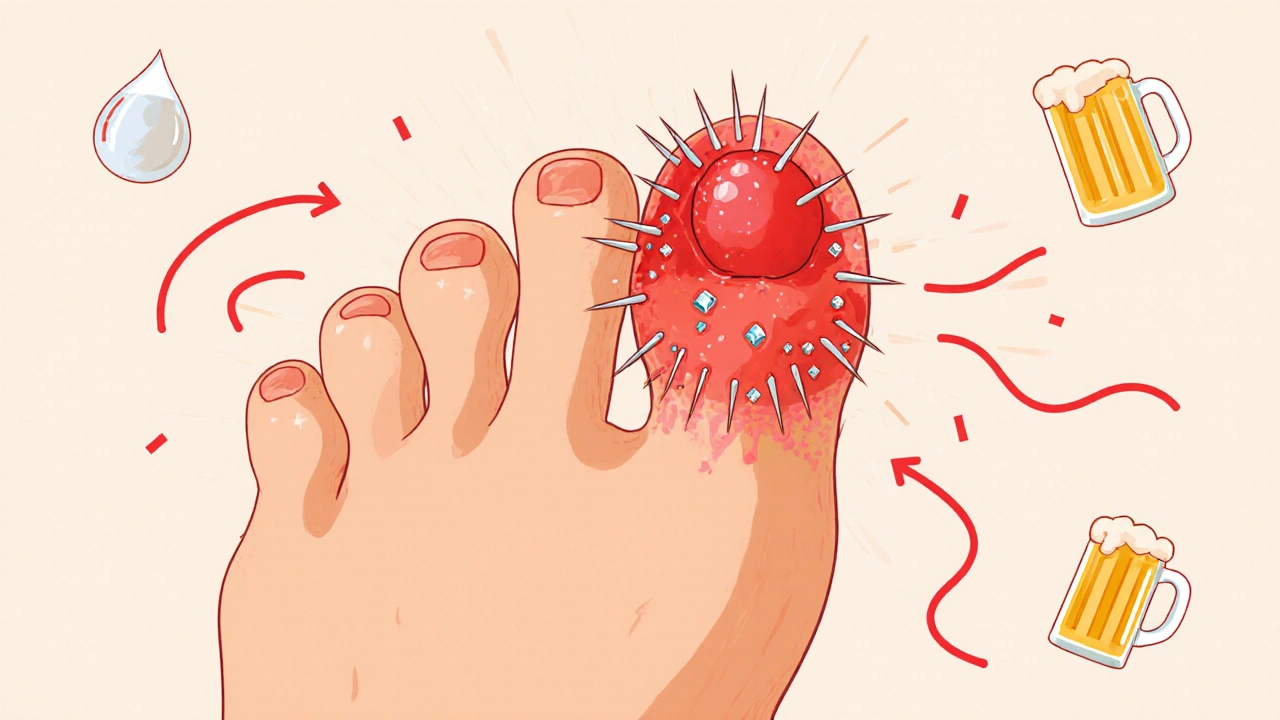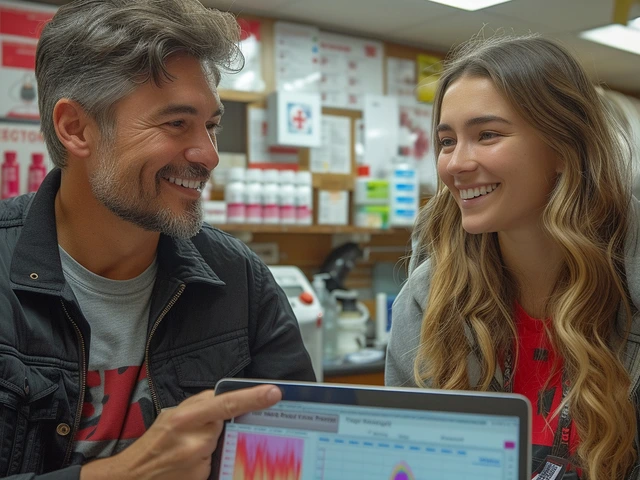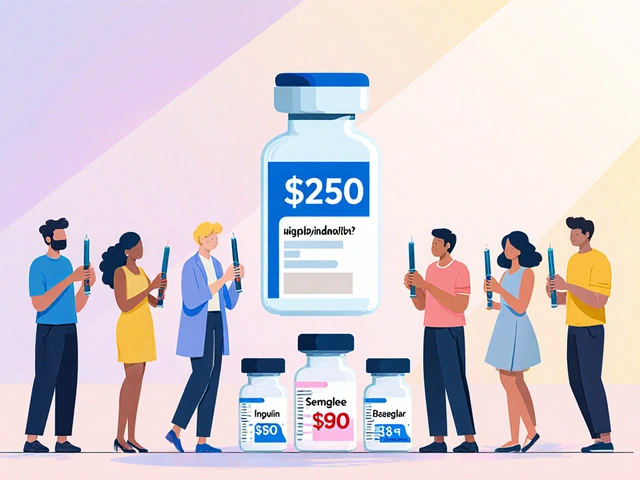When your big toe suddenly swells up, turns red, and feels like it’s on fire - even the weight of a bedsheet is unbearable - you’re not just having a bad night. You’re having a gout attack. This isn’t just ‘bad arthritis.’ It’s a direct result of uric acid crystals forming in your joints, triggering an intense immune response that turns your body against itself. And while it may feel sudden, gout doesn’t come out of nowhere. It builds silently over years, often unnoticed, until one trigger sets it off.
What Causes Gout? It’s Not Just Diet
Many people think gout is caused by eating too much steak or drinking too much beer. That’s only part of the story. The real problem is too much uric acid in your blood. Uric acid is a waste product from breaking down purines - substances found naturally in your body and in certain foods. Normally, your kidneys filter it out and flush it through urine. But in gout, something goes wrong.
About 90% of people with gout don’t make too much uric acid - their kidneys just don’t flush it out well enough. This is often due to genetic changes in kidney transporters like SLC2A9 and ABCG2. These genes control how much uric acid gets reabsorbed instead of excreted. If they’re not working right, uric acid builds up. When levels hit 6.8 mg/dL, it’s like salt in water - it starts to crystallize. Those sharp, needle-like crystals settle into joints, especially the big toe, ankles, and knees, where it’s cooler and the fluid is slower-moving.
Less than 10% of cases come from overproduction - usually from genetic disorders, rapid cell turnover (like in cancer), or extreme diets high in purines. But even then, the kidneys still have to handle the load. If they’re already struggling, gout follows.
What Triggers a Gout Flare?
Once crystals are sitting in your joint, they’re like landmines. They don’t cause pain until something disturbs them. That’s when a flare hits.
- Dehydration: Not drinking enough water drops your urine output below 1.5 liters a day. That means less uric acid gets flushed out, and crystals form faster. Even a single day of heavy sweating or not drinking enough can set off an attack.
- Dietary triggers: Organ meats (liver, kidney) have 300-500 mg of purines per 3-ounce serving. Shellfish like shrimp and mussels are also high. But surprisingly, the biggest dietary culprit for many is fructose - the sugar in soda, sweetened juices, and processed snacks. Fructose breaks down in your liver and boosts uric acid production by 20-30% in just hours.
- Alcohol: Beer is the worst offender because it’s not just alcohol - it’s also rich in purines. One 12-ounce serving increases gout risk by 49%. Spirits raise risk too, but less - about 15% per serving. Wine has the smallest effect, but it’s not risk-free.
- Medications: Thiazide diuretics (water pills) and low-dose aspirin (75-325 mg/day) block uric acid excretion. Even some blood pressure meds can make things worse.
- Rapid changes in uric acid: This is the most misunderstood trigger. Starting or changing urate-lowering meds like allopurinol can actually cause flares - because your body reacts to any sudden shift in uric acid levels, whether up or down. That’s why doctors now prescribe anti-inflammatories alongside these drugs from day one.
- Joint injury or stress: A minor bump, even from walking too far or wearing tight shoes, can shake loose crystals and trigger inflammation.
How Gout Attacks Actually Happen (The Science Behind the Pain)
It’s not just the crystals hurting your joint. It’s your immune system going into overdrive. When immune cells called macrophages spot the urate crystals, they activate something called the NLRP3 inflammasome. This triggers a chain reaction that releases interleukin-1β - a powerful inflammatory signal. That’s what causes the swelling, heat, redness, and excruciating pain.
This is why painkillers like ibuprofen or naproxen help - they block the inflammation. But they don’t fix the root cause. The crystals are still there. That’s why treating gout isn’t just about stopping the pain. It’s about preventing the next attack - and the one after that.
Medications for Acute Attacks: What Works Fast
If you’re in the middle of a flare, you need fast relief. There are three main options:
- NSAIDs: Indomethacin (50 mg three times a day) or naproxen (500 mg twice daily) are first-line. They reduce inflammation and pain within hours. But they’re not safe for everyone - avoid them if you have kidney disease, stomach ulcers, or heart failure.
- Colchicine: Taken at 0.6 mg every hour until symptoms improve (up to 3 doses), then 0.6 mg once or twice daily. It blocks the immune response triggered by crystals. Side effects? Diarrhea in 10-20% of people. Lower doses (0.3 mg twice daily) are now preferred for better tolerance.
- Corticosteroids: Oral prednisone (30-40 mg daily for 5 days, then tapered) or a joint injection. Great for people who can’t take NSAIDs or colchicine. Works just as well, with fewer stomach issues.
Don’t take these meds to prevent flares. They’re for emergencies only. Using them long-term without urate-lowering therapy is like putting a bandage on a broken bone.

Long-Term Treatment: Lowering Uric Acid for Life
Once a flare settles, the real work begins: lowering your blood uric acid to prevent future attacks. The goal? Keep it below 6 mg/dL. For people with tophi (visible lumps of crystals under the skin), aim for 5 mg/dL or lower.
Here’s how it’s done:
- Allopurinol: First-choice drug. Starts at 100 mg daily. Your doctor will slowly increase the dose - by 100 mg every 2-5 weeks - until your uric acid hits target. Most people need 300-600 mg daily. Some need up to 800 mg. It’s safe for most, including those with kidney disease.
- Febuxostat: Used if allopurinol causes a rash or doesn’t work. Starts at 40 mg daily, can go up to 80 mg. More expensive, but effective. Watch for liver enzyme changes.
- Probenecid: A uricosuric drug that helps kidneys flush out more uric acid. Only works if your kidneys are healthy (GFR above 50 mL/min). Not for people with kidney stones.
Here’s the catch: you must take these every day, even when you feel fine. Stopping for a week? Uric acid rebounds to previous levels in 2-4 weeks. Flares return. Gout is a chronic condition - not something you cure and forget.
Prophylaxis: Why You Need Anti-Inflammatories While Starting Treatment
When you start allopurinol or febuxostat, your body reacts. The dropping uric acid levels cause crystals to shift and release more inflammatory signals. Up to 40% of people have a flare in the first 6 months.
The fix? Low-dose colchicine - 0.6 mg once or twice daily - taken for at least 6 months while your uric acid drops. Studies show this cuts flare risk by 50-75%. Don’t skip this step. It’s not optional. It’s essential.
Diet and Lifestyle: What Actually Helps
Diet won’t cure gout - but it can make a big difference. Focus on these changes:
- Drink water: Aim for 2-3 liters a day. This helps your kidneys flush uric acid. Dehydration is one of the most preventable triggers.
- Choose low-fat dairy: One serving of milk or yogurt daily reduces gout risk by 43%. The proteins in dairy help kidneys excrete uric acid.
- Limit alcohol: Cut beer to less than one 12-ounce serving per day. Avoid binge drinking. Spirits are better than beer, but still risky.
- Avoid sugary drinks: Soda, energy drinks, sweetened tea - all spike uric acid. Switch to water, unsweetened tea, or coffee (coffee lowers risk).
- Reduce red meat and shellfish: Swap them for eggs, tofu, legumes, or chicken (in moderation).
- Maintain a healthy weight: Losing even 10 pounds can lower uric acid by 1-2 mg/dL.

Monitoring and Long-Term Outlook
Don’t just take your meds - track your progress. Get your serum uric acid tested every 2-5 weeks while adjusting your dose. Once you’re stable, check every 6 months. If you’re below 5 mg/dL for a year, tophi may shrink or disappear. In fact, 70% of people with chronic tophaceous gout see complete resolution of tophi at this level.
And here’s the good news: if you stick with treatment, gout attacks become less frequent, less severe, and eventually stop. Joint damage halts. You can live without constant pain.
What Not to Do
- Don’t stop your urate-lowering meds during a flare. That’s the biggest mistake. Keep taking allopurinol or febuxostat. Treat the flare with NSAIDs or colchicine.
- Don’t assume you’re cured. Gout doesn’t go away just because you haven’t had a flare in a year. Uric acid is still high. Crystals are still there.
- Don’t ignore side effects. Allopurinol can cause a rare but serious skin reaction called hypersensitivity syndrome. If you get a rash, fever, or swollen lymph nodes, stop the drug and call your doctor immediately.
What’s Next? New Treatments on the Horizon
Researchers are now targeting the NLRP3 inflammasome directly. Drugs like dapansutrile - which block the specific pathway that triggers inflammation - are in phase III trials. Early results show a 40% reduction in flare duration compared to placebo. That’s the first treatment designed to stop gout at the source, not just the symptoms.
Another exciting area? Gut health. Early studies suggest certain probiotics may help break down purines in the gut, lowering uric acid by 10-15%. While not a replacement for meds, this could become a helpful addition in the future.
Gout used to be called the ‘disease of kings’ - because only the rich ate enough meat and drank enough wine to trigger it. Today, it’s the disease of convenience - sugar-sweetened drinks, processed foods, and sedentary lifestyles. But it’s also one of the most manageable chronic conditions - if you know how to treat it right.
It’s not about perfection. It’s about consistency. Take your meds. Drink your water. Avoid the triggers. And don’t let a flare convince you that treatment doesn’t work. It does - if you give it time.
Can gout be cured with diet alone?
No. Diet can help reduce the frequency and severity of attacks, but it rarely lowers uric acid enough to prevent flares completely - especially if your kidneys aren’t excreting it properly. Most people need medication to reach and maintain the target level of under 6 mg/dL. Diet works best as a partner to medication, not a replacement.
Why does gout usually start in the big toe?
Uric acid crystals form more easily in cooler areas of the body. The big toe is often the coolest joint, especially when you’re sitting or sleeping. It’s also a joint that takes a lot of pressure, making it more likely for crystals to get disturbed and trigger inflammation. But gout can affect ankles, knees, wrists, and fingers too.
Is it safe to take NSAIDs every time I have a flare?
Occasional use during flares is fine, but frequent NSAID use can damage your kidneys and stomach over time. If you’re having flares more than once or twice a year, it means your uric acid isn’t under control. That’s a sign you need to start or adjust your long-term urate-lowering medication, not just treat symptoms.
Can I drink alcohol if I have gout?
You can, but you need to be careful. Beer is the worst - it has purines and alcohol, both of which raise uric acid. Spirits raise risk too, but less than beer. Wine has the smallest effect. If you drink, limit it to one serving occasionally, never binge. And never drink during a flare - alcohol slows uric acid excretion and can make the attack worse.
How long do I need to take urate-lowering medication?
Lifelong. Gout is a chronic condition caused by your body’s inability to manage uric acid. Stopping medication - even after years without flares - causes uric acid to rise again within weeks, and flares return. Most people who stay on treatment have no more attacks and avoid joint damage. Think of it like blood pressure or cholesterol meds: you take it to stay healthy, not because you feel sick.








Kristi Joy November 18, 2025
I’ve been living with gout for 12 years, and honestly? The biggest game-changer was just drinking more water. I used to think it was all about avoiding beer, but turns out dehydration was my silent killer. Now I carry a liter bottle everywhere-even to bed. No more midnight flare-ups. It’s not glamorous, but it works.
Also, low-fat yogurt every morning? My doc laughed when I told him I was doing it, but my uric acid dropped 2 points in 3 months. Simple stuff, but it adds up.
Hal Nicholas November 19, 2025
Everyone’s acting like this is some revolutionary guide. Newsflash: gout’s been around since Hippocrates. The real problem? People want magic bullets. You want to avoid flares? Stop eating steak, quit soda, and drink water like your life depends on it-which it does. Allopurinol isn’t optional. It’s basic. If you can’t handle that, don’t complain when your toe looks like a swollen grape.
Louie Amour November 21, 2025
Look, I’ve read every paper on NLRP3 inflammasomes and urate transporters. This post is cute, but it’s still just surface-level. You didn’t even mention the role of gut microbiota in purine metabolism-there’s a 2023 Cell paper showing Bifidobacterium longum reduces serum uric acid by 18% in hyperuricemic mice. And you call this comprehensive?
Also, probiotics? Please. That’s not medicine, that’s wellness influencer nonsense. Real treatment requires precision dosing, not yogurt.
Kristina Williams November 21, 2025
They’re hiding the truth. Gout isn’t about uric acid at all-it’s about fluoride in the water. Big Pharma and the CDC know this. Fluoride messes with your kidneys’ ability to filter out toxins. That’s why it’s so common in cities with fluoridated tap water. I tested my levels after switching to bottled water-my uric acid dropped 3 points in two weeks. They don’t want you to know this because they make billions off allopurinol.
Also, I saw a video where a guy cured his gout with apple cider vinegar and infrared socks. You’re all being manipulated.
Shilpi Tiwari November 22, 2025
Extremely well-structured breakdown of the pathophysiology-particularly the SLC2A9/ABCG2 transporter dysfunction. I’m a nephrology resident, and I appreciate how you contextualized the renal excretion deficit as the primary driver (>90%).
One nuance missing: the role of hypoxanthine-guanine phosphoribosyltransferase (HGPRT) deficiency in overproducers. Also, should’ve mentioned febuxostat’s CYP3A4 interactions. But overall, this is textbook-grade clarity. The prophylaxis point with colchicine is gold-so many patients stop meds during flares, thinking it’s counterproductive. It’s not. It’s physics.
Christine Eslinger November 23, 2025
There’s something beautiful about how this condition forces you to slow down. Gout doesn’t care if you’re busy, rich, or stressed-it just says, ‘Hey, your body’s been screaming for months. Now you’re gonna listen.’
I used to think meds were a sign of weakness. Then I had my third flare in six months and realized: taking allopurinol daily isn’t giving up. It’s choosing to keep living. I started walking every morning, swapped soda for sparkling water, and yes-I eat yogurt like it’s my job. I’m not cured. But I’m not miserable anymore. That’s enough.
And if you think diet alone fixes it? Try it. Then come back when your toe’s swollen again.
Denny Sucipto November 24, 2025
Bro, I used to think gout was just for old guys who drank too much. Then I had my first attack after a BBQ and a six-pack. Thought I’d be fine. Nope. Felt like my toe was being stabbed by a thousand needles.
Found out I had to take that little white pill every day-even when I felt fine. Felt like a traitor to my ‘I don’t do meds’ identity. But now? Zero flares in 14 months. Water, no soda, no beer, and I actually sleep through the night. It’s not sexy. But it’s freedom.
Don’t let pride turn your foot into a warzone.
Holly Powell November 24, 2025
How is this still considered ‘medical advice’? You’re treating gout like a lifestyle blog. Where’s the data on patient adherence rates? The cost-effectiveness of febuxostat vs. allopurinol in comorbid CKD? The meta-analysis on colchicine prophylaxis duration? You cite ‘studies show’ but provide zero citations. This is dangerously reductive.
And recommending yogurt? That’s not evidence-it’s anecdotal noise. Real medicine doesn’t rely on dairy marketing. You’re doing a disservice to patients who need precision, not platitudes.